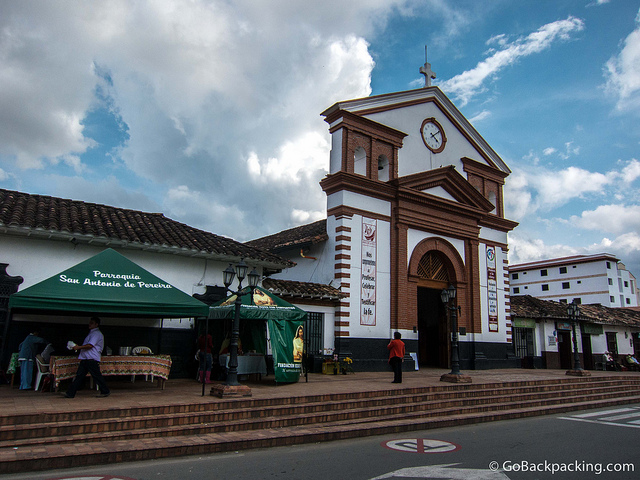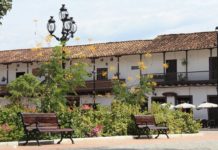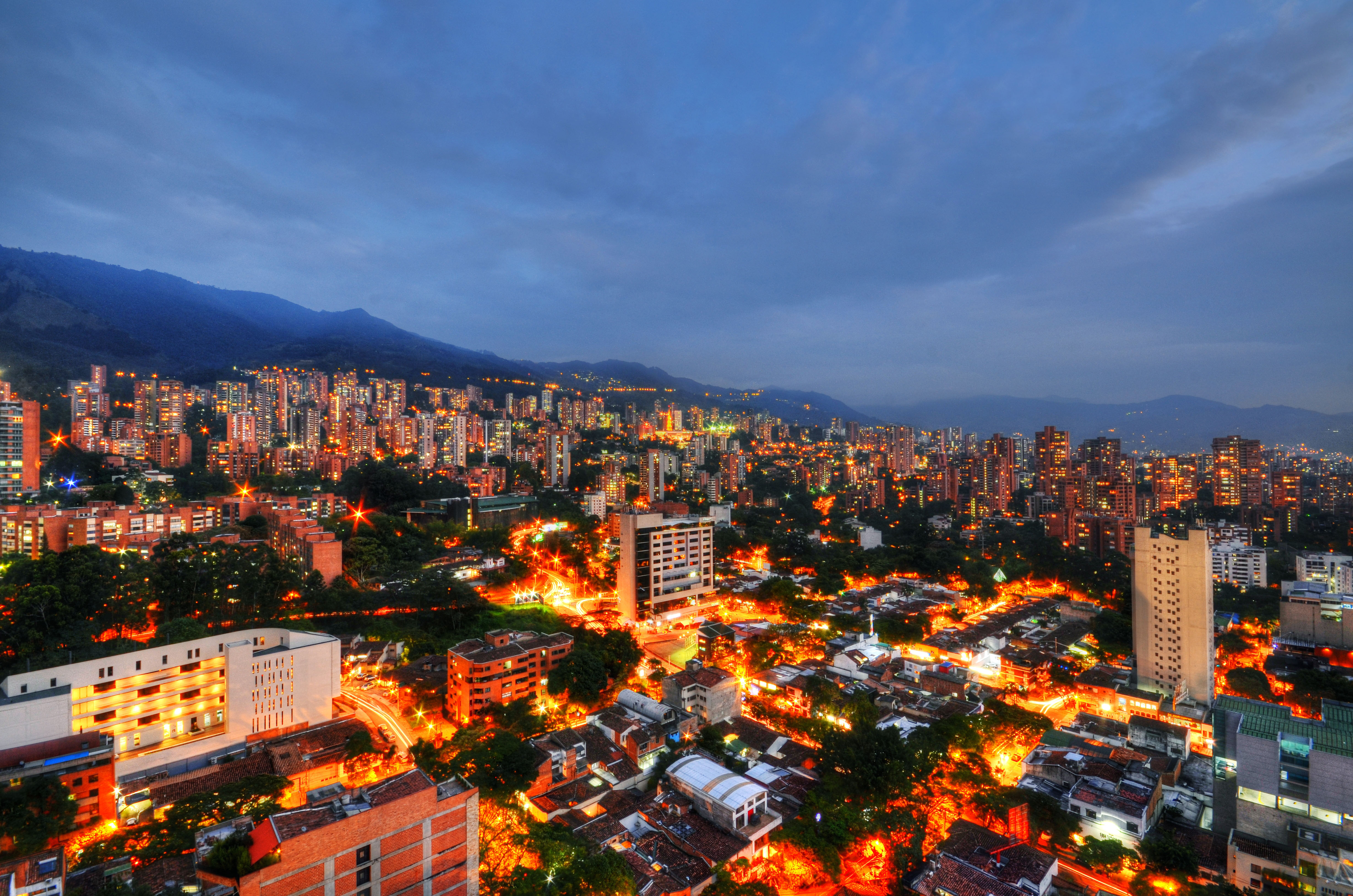
The pueblos of Antioquia are as much a part of living in Medellin as the city itself. Last Saturday, I escaped to San Antonio de Pereira in Rio Negro for the first time.
San Antonio de Pereira is known for two things, 1) its sweets and desserts, which have attained regional fame, and 2) its nightlife on the weekends, which attracts visitors and partygoers from across Rio Negro (a municipality of Antioquia, which is also home to the international airport).
Viviana, a paisa, joined me on this journey. What follows is my account of our 24-hour adventure, and tips for how you can make it happen too.
Getting There
We met at the Terminal de Sur (southern bus terminal) at 1:30 PM. Bus tickets cost about 6,000 pesos ($3.36) per person, but only take you as far as the bus terminal in Rio Negro. From there, you’d have to catch another 15-minute bus, or taxi, to San Antonio de Pereira.
Instead, we opted for a shared taxi. At 12,000 pesos ($6.72) per person, it’s double the cost, but more comfortable and faster. Normally the taxis leave when they have four passengers, but we lucked out. Another woman who needed a taxi to the airport was willing to pay for two people, so we left, just the three of us.
Our driver took off like a bat out of hell, and we were soon speeding up and out of the valley via Las Palmas. It took just 45 minutes to reach the airport. From there, we’d agreed to pay another 6,000 pesos ($3.36) for a ride to the pueblo.
In total, the cost for two by shared taxi was 30,000 pesos ($16.78) from Medellin to San Antonio, and we were there in exactly an hour’s time.

Where to Sleep
Searching the internet for a place to stay in advance turned up nothing, so as often is the case, the “show up and find a place” strategy was employed.
Dropping us off in the main plaza, which was no larger than four square blocks, the taxi driver pointed us toward Hotel La Perla de Pereira (Cra 55A # 22 – 33), a half block away.
We checked out two of the available rooms, each with a private bathroom, hot water, and cable TV. Both had the strong scent of cleaning liquids. It was so strong, in fact, that I wanted to see if we had any other options in town.
Asking around, we found what was apparently the only other hotel two blocks away. Larger, but with the same smell, and much harder “mattresses” I opted for La Perla.
We returned and took one of the double rooms for 55,000 pesos ($30.80). The other rooms were already occupied.
Because San Antonio draws a mostly local Rio Negro crowd via car, taxi, and bus on the weekends, there’s not much in the way of accommodation, unlike bigger pueblos like Guatape.

The Famous Desserts
When I asked about San Antonio de Pereira on the Medellin Living Facebook page, many people recommended I try the sweets.
One person even mentioned Anthony Bourdain having visited for this reason, though I don’t recall that airing on his Colombia episode of No Reservations.
We asked the nice lady who runs La Perla for the place with the best sweets, and she recommended Dulces y Postres, which has a green and white facade, and faces the main plaza.

I had no idea what to expect, but we walked over to find a room filled with homemade pastries, one after the other. The two dozen or so flavors were all labeled.
It looked like the scene of a school bake sale. Viviana and I cased the options, from chocolate and nutella to strawberry and yuca. Yes, apparently yuca is a popular flavor.
I asked one of the girls which flavor was most popular, and she pointed me toward a plain-looking custard (like flan), and several toppings, one of which was arequipe (caramel sauce).

I opted for the arequipe, while Viviana chose chocolate.
My dessert, smothered in arequipe, to nobody’s surprise, tasted like it.
I preferred the chocolate dessert, despite the fact that it had raisins in it. I still do no understand why Colombians put fruits, and especially raisins, in otherwise delicious cakes.
Each portion costs 4,500 pesos ($2.52).

Where to Eat
After the sweets, we did a lap around the main plaza, but unlike Jardin, for example, it’s not the most attractive pueblo.
One exception, which caught my eye, was El Balcon, with its hanging flowers, colorful umbrellas, and blue banisters.
We grabbed a table on the balcony of El Balcon, and watched the people and cars go by over coffee with Baileys.
Across the street, a trampoline and inflatable slide were set up. Both were popular with the kids. There were also small horses available for rides around the plaza.

After a siesta at the hotel, we headed out again for dinner that night. The sidewalk tables were now full of people drinking beers and eating. Street vendors were cooking up the usual fare of hamburgers, hot dogs, chorizo, and arepas con queso.
I found myself drawn again to El Balcon, perhaps because I remembered seeing trucha (trout) on the menu. And that’s exactly what I ordered for dinner.
There were a few options. I went with trucha al ajillo, which is trout with an “ajo” sauce. It wasn’t spicy, but it tasted good.
Dinner for two clocked in at 39,000 pesos ($22).

Where to Party
After dinner, we walked the streets running off the main plaza, surveying the nightlife options. For such a small pueblo, there were a ton of bars and discotecas. By comparison, I remember just one bar and one discoteca when I visited Guatape a few years earlier.
Many were already full by 10 PM, with people hanging out in the streets as well.
El Potrero caught my eye, a half block off the main plaza, on account of the giant horse head featured on the sign. El Potrero literally translates as “paddock” so we were looking at a stable-themed discoteca. It was my pick of the night.

Security gave me a brief pat down, and then we were shown to a table near the back of the club. The interior decor had the look and feel of a stable, as was to be expected. Truth in advertising.
The construction consisted of wooden beams, with the occasional saddle hanging from above. A nice surprise was a small stage set up for dancing, though Viviana and I had enough space by our table not to need it.
While we both wanted a beer, there was a drink minimum. Our options were a half bottle of Aguardiente for 35,000 pesos ($19.60) or a Rum for 37,000 pesos ($20.72).
I chose the rum, and it was delivered along with a small bottle of Canada Dry, two bowls of popcorn, and a bowl of freshly chopped mango.
We spent the next few hours drinking and dancing to the mix of merengue, vallenato, salsa, and reggaeton.
We left around 12:30 AM, an hour and a half before the bars and discotecas close on Saturday nights.

Sunday Morning
Despite leaving the club relatively early, I barely slept that night. The music from bars surrounding our hotel was thumping until 2 AM.
Then it was the sound of rain which kept me awake.
But worst of all was the rooster, which began to squawk and crow around 4 AM, and would continue well into mid-morning. It must’ve been right outside our window, as we were only on the 2nd floor. I joked that I’d be eating that chicken for lunch.
The cafe on the main plaza I wanted to try for breakfast was closed. In fact, a lot of the restaurants were closed, and most of the street vendors had cleared out overnight as well.
We grabbed some coffees, and nibbled on croissants, bunuelos, and pan de Bogota from a table overlooking the plaza.
The difference in activity between the prior afternoon and Sunday morning was stark. There was far less traffic, and far fewer people walking around. Everyone who’d arrived the day before were either sleeping in their nearby fincas, or had returned home.
Checkout was 2 PM, but before we could leave, I needed to sample another dessert. In Postres de San Antonio, another shop like Postres y Dulces, we were offered samples. I wish I’d thought to ask for some the day before.
I tasted a half-dozen flavors, and while my favorite was the popular orange with aguardiente, I wanted to go back to Postres y Dulces.

Getting Back to Medellin
There, I sampled another half-dozen flavors, and settled on nutella. It was a hit with my tastebuds, and lacked the raisins found in the chocolate option.
Satisfied with the unhealthy amount of sugar and fat I’d consumed over the last 24 hours, it was time to head back to Medellin.
There were some taxis off the main plaza, but the hotel manager said they could run us 80,000 pesos ($45). Seeing as how the official rate from the airport to Medellin is just 57,000 pesos ($32), I wasn’t sure if she was exaggerating.
We decided to take a local bus from San Antonio de Pereira to Rio Negro. At just 1,400 pesos per person ($0.78) it was a real bargain, and just a 15-minute ride. Easy.
At the Rio Negro terminal, there were no share taxis available. We boarded a bus leaving in 15 minutes. At 6,000 pesos ($3.35) per person, it was a fraction of the cost of a taxi. Totaling 14,800 pesos ($8.29), our return by bus was half the cost of our shared taxi the day before.
But that savings came at a price. The total transit time from San Antonio to Medellin’s southern bus terminal was two and a half hours, plus the bus route went through the pueblo of Santa Elena.
Unlike the relatively straight and fast highways of the day before, these mountain roads featured an endless supply of sharp and winding curves. Due in part to my lack of sleep, and breakfast of nutella cake, I began to get motion sick. It was an unpleasant way to end the trip.
“Next time,” I vowed as the bus lurched left then right, “I’m paying for the taxi.”
For the budget-conscious, our 24-hour escape to San Antonio de Pereira cost $105.












